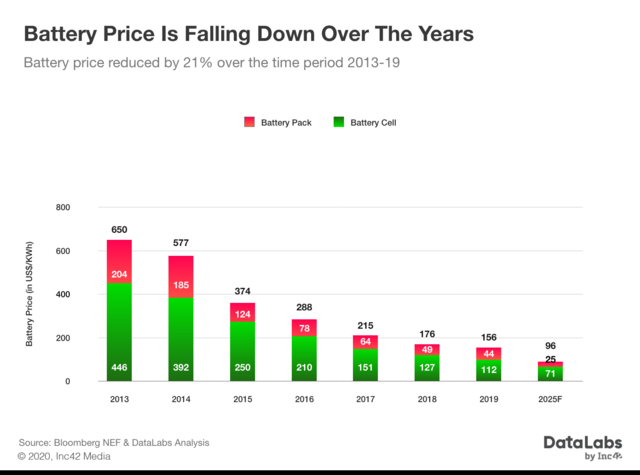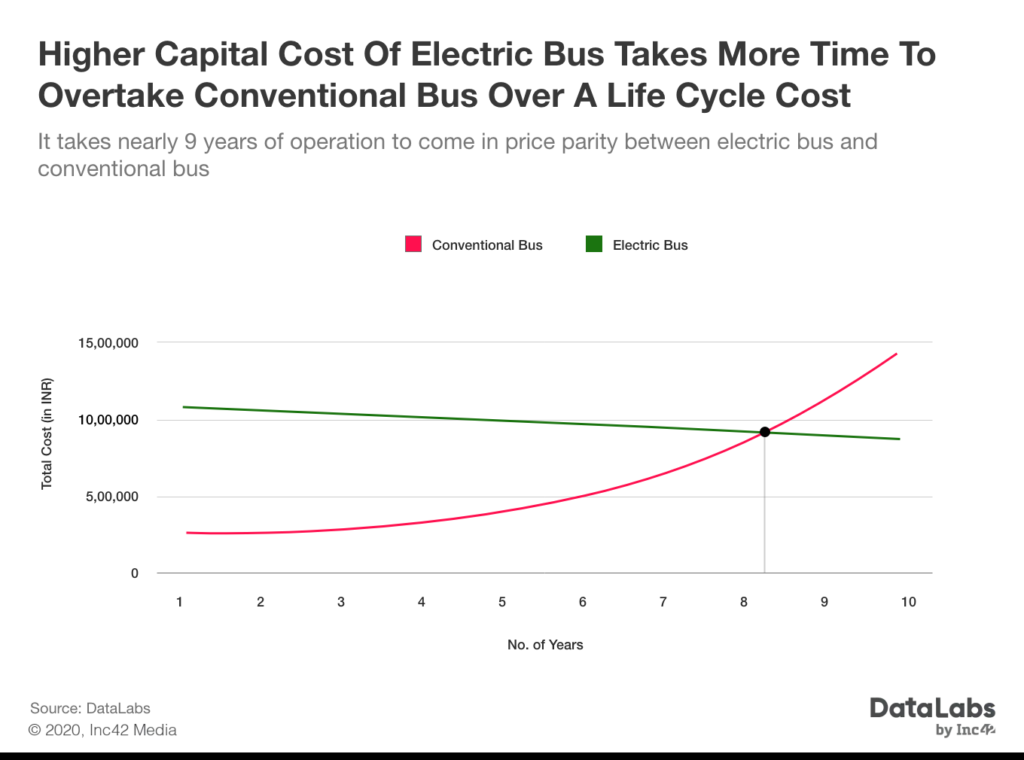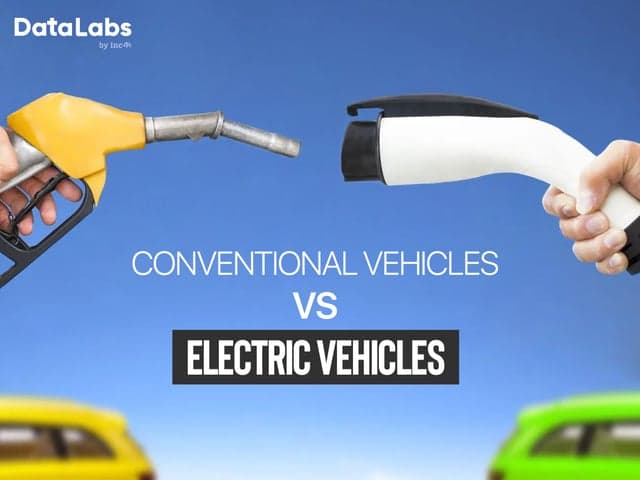Any decline in battery prices will help to reduce the overall cost of ownership of electric vehicles
Electric vehicles are cheaper than conventional vehicles over the life cycle of a vehicle
Electric three-wheelers have become more commercially profitable in India than other categories
As already explored in our series of articles on the electric vehicles (EV) ecosystem in India, the biggest drawback for the consumer is that EVs are priced much higher than conventional vehicles.
However, the purchasing cost doesn’t truly reflect the total cost of ownership (TCO) of a vehicle to the consumer. The operational cost of EVs is much lower than conventional vehicles. Hence, after some years of operation, the total cost of conventional vehicles will cross the total cost of EVs.
With battery prices falling continuously and having decreased by 21% in 2019 from 2013 levels, the cost of ownership will fall dramatically in the long run. At the same time, advancement in the battery cell and packing technologies increased supply of raw materials like lithium, manganese, cobalt, nickel, and aluminium, and improved grid capacity will also bring down the cost of EV ownership year after year.
But at present, EVs are far more expensive than petrol or diesel internal combustion vehicles. With the increasing demand of EVs, there is a shortage of battery materials, which is why battery global battery manufacturers such as CATL, LG Chem, Panasonic, BYD, and Samsung SDI are looking for alternative battery technology like solid-state and fuel cell.
According to DataLabs by Inc42 analysis, the battery price will reach US$96 per KWh by 2025 which will subsequently reduce the purchase cost of EVs in coming years.
ORDER YOUR COPY NOW!
Will EVs Reach Critical Mass?
The global passenger EV market is dominated by players such as Tesla, BYD, BAIC, BMW and Hyundai, whereas the Indian passenger EV market has models from Tata Motors, Hyundai, Mahindra and Mahindra and MG Motor (part of the SAIC Group). The global penetration of passenger EVs is nearly 3%, but the penetration of EVs in India is just 0.12% which is very low. Plus the average family income in India is $3K per year, whereas the average price of EVs available in India is between $17-21K. This puts EVs out of reach of most consumers.
The capital cost required for buying passenger EVs, charging infrastructure and driving range anxiety are major reasons for slower adoption of EVs. At the initial stage of EV adoption, India needs more financial support to encourage consumers to purchase EVs, which is a budding opportunity in the Indian market. This is crucial considering that the operational cost of passenger EVs is nearly four times lower than conventional vehicles. So making purchasing EVs easier will help consumers come to terms with the savings over the life cycle of a vehicle.
A TCO comparison over a life cycle between Tata Nexon EV and Maruti Suzuki Swift DZire shows that price parity of conventional and EV will come in the 7th or 8th year of ownership. With more years of operation, the maintenance and service costs for conventional vehicles increases higher than EVs.

Price Parity In Commercial EVs And ICE Vehicles
Even in the global commercial EV market, there’s no real default choice for customers. Again, China is leading this market. In India, only a few electric buses are available on the road. In coming years, we will witness more penetration in light commercial vehicles (LCV) as more and more logistics, transportation, and e-commerce players use EVs in their fleet.
The purchase cost of a commercial EV is much higher than a conventional commercial vehicle. So it requires nearly nine years of operation to reach price parity with conventional vehicles. In our analysis, we considered Tata Starbus Ultra Electric and SML Isuzu S7 bus as benchmarks for comparing prices of electric and conventional commercial vehicles over a lifetime. For a yearly run of 70,000 Km, the operational cost of a conventional commercial vehicle is 2.5 times higher than a commercial EV.
The development in battery cell density and charging infrastructure will help India adopt more EVs in medium and high duty commercial vehicles after 2025.

Why Electric Two-Wheelers Work In India
Electric two-wheelers are the leading option for consumers in the EV space. India is leading the global two-wheeler market with 18.56 million units sales in 2019. But, the penetration of electric two-wheelers is only 0.67% at the end of 2019.
The Indian electric two-wheeler market is dominated by players like Ather, Revolt, Hero Motocorp, Bajaj Auto, Okinawa and Ampere. For our study comparing electric and conventional two-wheelers, we chose Ather 340 and Honda Activa 5G.
It concluded that the operational cost of an electric two-wheeler is 4 times lower than a conventional two-wheeler, after 5 years of operation. For the last mile commuting, individuals prefer electric two-wheelers due to the low cost of operation. The addition of electric two-wheelers in bike-sharing platforms by Rapido, Ola and Uber will help improve better penetration in 2020.

Three-wheelers Redefining Micro-Mobility
The electric three-wheeler available in India is priced lower than any other category of electric vehicles. The lower running cost (USD 0.15 per ride) is helping individuals and businesses gravitate towards electric three-wheelers
When comparing a Piaggio Ape Electrik and Mahindra Alfa DX, the breakeven point of electric and conventional three-wheelers will come after just two years of operation. The operational cost of a conventional three-wheeler is 3.3 times higher than an electric three-wheeler. The study is done for a projected run of 25,000 Km in a year.
In Tier 1 cities, price parity will come in two years of ownership, but it takes more time in Tier 2 and Tier 3 cities due to infrastructural gaps. Electric three-wheeler provides more benefit than ICE rickshaws over 10 years of life cycle depending on the investment done.

The total cost of ownership of EVs is lower than conventional vehicles only if the vehicle price and battery price drops over the course of the lifetime. If the initial problems of EV adoption can be addressed, then there’s no looking back for the EV market.
ORDER YOUR COPY NOW!































 Ad-lite browsing experience
Ad-lite browsing experience